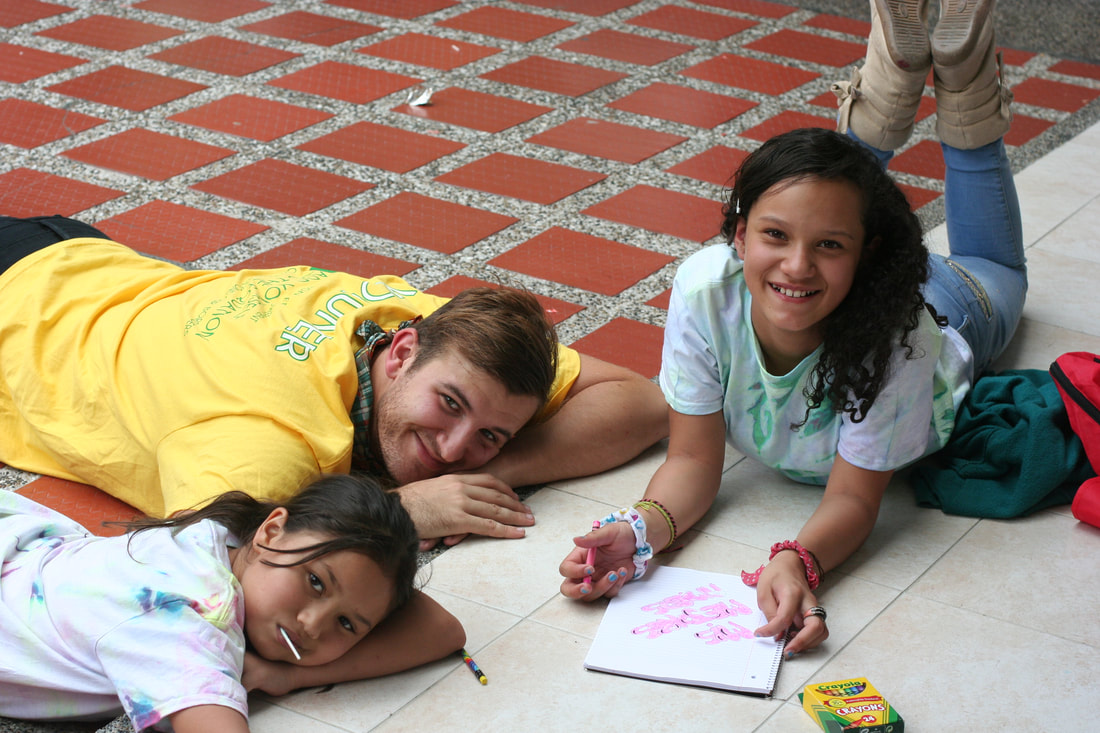|
by Christina Mouttet The only way to ensure a child’s future is through education. Education is the key to open all doors, to allow both individuals and societies as a whole to advance. This is why Children Beyond Our Borders Inc. has made it one of our top priorities to do our best in helping the education systems in Latin America, particularly in Colombia. However, many top Colombian universities are making noticeable progress in access and quality and are on par with international standards. So, why is it that such a large number of Colombians are still not going to college? Colombia’s education system by the numbers: · Only 37.2% of Colombians continue education after high school. · 45.4% of students dropped out of tertiary education as of 2010. · By the time children reach age 17, 75% drop out of the education system. · About 37% of students start school late and about 41% repeat at least one grade by age 15. · There are only 7.1 Masters of PhD degree holders per 1,000,000 inhabitants. The issue with the Colombian education is that while the students have good universities available to them, the educational system is not preparing the youth well enough for the universities. Inadequate facilities, lack of internet access, location of schools, and insufficient salaries for teachers are all factors that, combined, have created an extremely flawed system. While Colombia has put forth increasing effort in expanding the access of education across the country, they are not able to keep up financially with the rising number of students enrolled. Therefore, while more students may have access to a public school in their area, the quality of education they will be receiving is extremely low. Furthermore, access to schools is still a problem in rural areas. 2 out of 10 children living in rural areas will not attend school. 4.6% of annual GDP has been invested in education, but only .5% of this expenditure has gone towards rural areas. Because of this, there is a huge disparity between children in urban and rural areas. “In my experience, what can be improved about the system is the equality. Everyone deserves the right to the same education. When it comes to university, it is much harder for students who came from the public education system to be able to keep up with the students who received a paid, private education,” said Camilo Marrugo, a CBOB volunteer in Colombia. These issues have culminated into a poor education system that is one of the most massive problems facing Colombia today. Lack of education leads to a cycle of unemployment, violence, and poverty. If the people are not empowered, they are less likely to be successful. And as we say at CBOB: education equals empowerment.
Sources: http://www.worldbank.org/en/news/feature/2013/01/24/colombia-more-success-in-higher-education-more-opportunities-for-youth http://wenr.wes.org/2015/12/education-in-colombia http://www.oecd.org/education/colombia-should-improve-equity-and-quality-of-education.htm http://www.colombiainfo.org/en-us/colombia/education.aspx https://panampost.com/maria-suarez/2015/05/18/colombian-education-in-crisis-on-all-fronts/
9 Comments
RubyI'm
4/2/2018 07:55:23 pm
I'm only 11 but I would like to know how many people in all attend school
Reply
Garren
12/3/2021 10:31:59 am
mmmmmm education
Reply
11/11/2022 05:57:44 am
Microsoft Power BI: Produce Powerful Reports & Dashboards
Reply
3/10/2023 04:21:40 am
ITIL 4 is the latest version of the Information Technology Infrastructure Library (ITIL) framework, which provides best practices for IT service management. If you are interested in getting ITIL 4 certification training, there are several options available to you:
Reply
5/14/2024 03:39:26 am
Thanks for this beautiful blog. Your thoughts on youth education is really nice. Hopefully it will encourage many youngster towards education.
Reply
Leave a Reply. |
Archives
July 2021
|
|
Follow Us |



 RSS Feed
RSS Feed